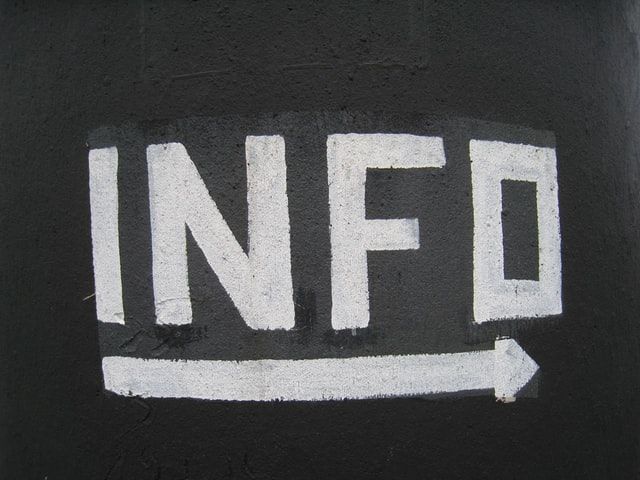
Recap of the WHO Infodemic Management Training
Clear and accurate information about COVID-19, vaccine effectiveness, and proper safety measures is essential to safeguarding the global community. Unfortunately, this pandemic has given rise to an infodemic, the rapid spread of confusing and misleading information increasing widespread distrust of public health experts.
The World Health Organization (WHO) offers Infodemic Management 101, a course that covers what an infodemic is, how it impacts public health, and how experts and laypeople can manage its effects. Infodemic Management 101 is a valuable investment of time for information officers, experts, and citizens who care about the accuracy of health information.
Infodemic Management 101 is free and takes about four hours to complete. You can go to the course information page on the OpenWHO portal to enroll. This article provides a thorough synopsis of the course material for reference.
Module 1: Introduction to Infodemic Management
An infodemic refers to the proliferation of misleading or false information about a disease outbreak across multiple platforms. An infodemic contributes to increased risk-taking behaviors, such as going into crowded indoor spaces without a mask when transmission of the disease is high. Infodemics also undermine public health efforts and heighten the mistrust of medical experts and policymakers, often prolonging the pandemic.
Infodemic management ensures that people receive the correct information in the most appropriate formats to make informed decisions about health behaviors. Infodemic management involves four communication strategies:
- Empowering communities to promote public health and safety
- Promote social listening to give voice to peoples’ concerns and questions
- Educate people on the disease-related risks and promote advice from leading experts
- Promote resistance to misinformation
Module 2: The Science of Misinformation
Misinformation refers to the spread of false statements regardless of the source’s intent. In contrast, someone spreads disinformation for malicious reasons by injecting bias, distorting facts, or manipulating the narrative.
Students also learn how false and misleading information spreads. For example, claims that confirm people’s biases can go viral quickly. Also, many people share misleading stories, memes, or statistics out of anger or fear. The course also equips learners to identify common logical fallacies that have increased from some of the COVID-19 news coverage:
|
|
Definition |
Example |
|
Red Herring |
Drawing attention away from the primary point under consideration |
Experts are retracting what they’ve said about the COVID-19 vaccine causing sterility. This probably has something to do with those lawsuits against Bill Gates. |
|
Causal Fallacy/False Cause |
Assuming that if one event happens after another event, the first caused the second |
My cousin came down with an autoimmune condition right after she got her second COVID shot. The vaccine is dangerous. |
|
Appeal to Ignorance |
Emphasizing what is unknown rather than what has been verified |
I don’t trust future booster shots because scientists can’t tell us about their long-term side effects. |
|
Slippery Slope |
Taking one situation or occurrence to an illogical extreme |
If they can force some workers to get a COVID vaccine, what’s to stop them from making everyone in the country get it? |
Module 3: Verification and Fact-Checking in a Health Crisis
Students learn how to fact-check, which is consulting unbiased sources to investigate the accuracy and credibility of information. Fact-checking is important because misinformation can sway opinion and lead people to engage in harmful or risky health behaviors, such as foregoing COVID vaccination or ignoring public safety recommendations like masking and social distancing.
Students also learn to spot misleading verbal and visual content in its many forms. Skills include identifying information sources and determining their bias or agenda. Also, information consumers should be able to discern the purpose of the message, pinpoint omitted details, and consult neutral, credible sources to verify statistical or factual claims.
Module 4: Prebunking, Debunking, and Inoculation Theory
Students learn about inoculation, which exposes target audiences to the false information you want them to reject so that they learn to identify and resist it in the future. Inoculation is an effective strategy for building credibility and helping audiences resist harmful misinformation or disinformation.
Prebunking is a form of inoculation and debunks mis/disinformation before most of the public consumes it. Message designers can use prebunking to inform audiences about credible sources, explain manipulative tactics in false or biased information, and attack false claims before they become widespread.
Module 5: Intervention Design and Community Empowerment
Health educators and community leaders should consider several factors when designing interventions, such as risk perception and the impact of misinformation on trust. Interventions should also incorporate engagement and empowerment within the community. Applications of this approach might include:
- Combining expert presentations with interactive discussions
- Inviting community members to create their own solutions
- Partnering with faith-based and cultural groups
- Generating messages that resonate with diverse audiences
Research and materials for this article were compiled, written, and distributed on behalf of the National Public Health Information Coalition. The views and opinions expressed in this blog are those of the various authors and do not necessarily reflect the official policy or position of the National Public Health Information Coalition or its members.
References
https://www.who.int/health-topics/infodemic#tab=tab_1
https://openwho.org/courses/infodemic-management-101
https://guides.lib.uw.edu/c.php?g=345925&p=7772376
https://www.chop.edu/news/news-views-name-logical-fallacy-covid-19-edition
https://coinform.eu/what-is-fact-checking-and-why-is-it-important/

